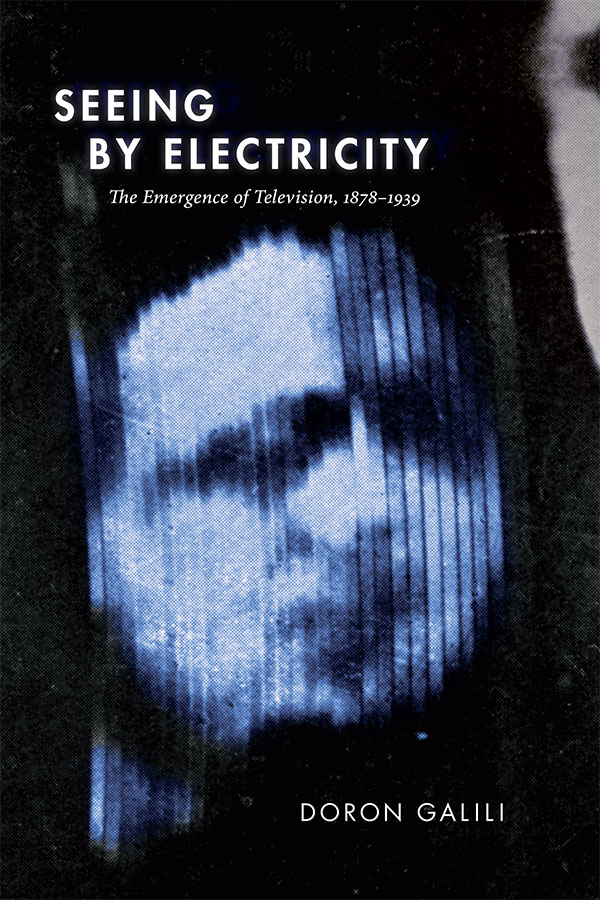Doron Galili, chercheur en études médiatiques à l’Université de Stockholm, a récemment publié l’ouvrage Seeing by Electricity. The Emergence of Television, 1878-1939 chez Duke University Press. Le livre propose une histoire longue de la relation entre télévision et cinéma en la faisant remonter non pas aux débuts des années 1940, quand les deux industries commencent à être en concurrence, mais à la fin du XIXe siècle. Le chercheur s’intéresse alors à différents dispositifs télévisuels imaginaires et à la manière dont ils sont pensés en relation au film. Sa démarche – intermediale – s’apparente notamment à celle de l’historien des médias William Uricchio dont plusieurs travaux portent également sur le XIXe siècle et les « débuts » de la télévision (par exemple, ce texte).
Présentation de l’ouvrage:
« Already in the late nineteenth century, electricians, physicists, and telegraph technicians dreamed of inventing televisual communication apparatuses that would “see” by electricity as a means of extending human perception. In Seeing by Electricity Doron Galili traces the early history of television, from fantastical image transmission devices initially imagined in the 1870s such as the Telectroscope, the Phantoscope, and the Distant Seer to the emergence of broadcast television in the 1930s. Galili examines how televisual technologies were understood in relation to film at different cultural moments—whether as a perfection of cinema, a threat to the Hollywood industry, or an alternative medium for avant-garde experimentation. Highlighting points of overlap and divergence in the histories of television and cinema, Galili demonstrates that the intermedial relationship between the two media did not start with their economic and institutional rivalry of the late 1940s but rather goes back to their very origins. In so doing, he brings film studies and television studies together in ways that advance contemporary debates in media theory. »
L’introduction de l’ouvrage est en libre accès sur le site de l’éditeur.
Visitez également le site web de Doron Galili.
On peut finalement signaler deux textes du chercheur sur l’histoire longue de la télévision: une traduction française et un article dans un numéro de la revue View dirigé par Andreas Fickers et Anne-Katrin Weber. Les deux contributions sont librement accessibles:
Galili, Doron. « L’histoire des débuts de la télévision et les théories modernes de la vision ». In Télévision, le moment expérimental, édité par Gilles Delavaud et Denis Maréchal, 139‑50. Paris: Apogée, 2011.
